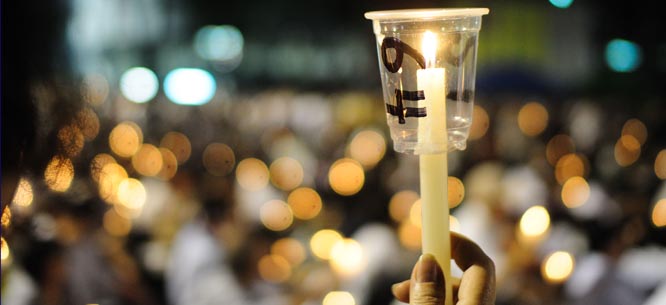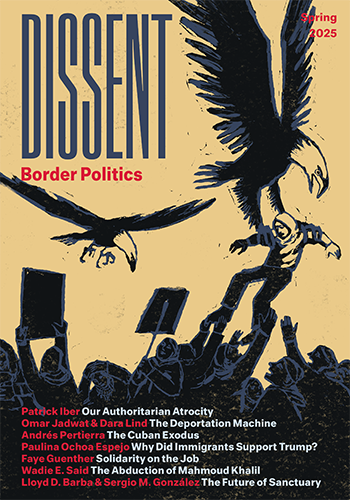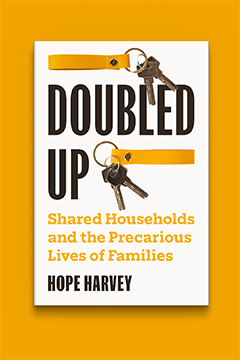Looking Back at the June 4 Massacre, Twenty-Four Years on
Looking Back at the June 4 Massacre, Twenty-Four Years on
Many supporters of the Tiananmen movement hoped that the regime would reassess the protests of 1989. A similar set of 1976 demonstrations were initially dubbed “counterrevolutionary riots” but then reassessed as a “patriotic” struggle. But the situation relating to the June 4 Massacre is very different.

Late last year and early this year, I worked with Maura Elizabeth Cunningham on creating the second edition of China in the 21st Century: What Everyone Needs to Know, a short book with a question-and-answer format whose first edition came out in 2010. Given how quickly China has been changing, there were many things that needed updating, especially in chapters that come late in the book. Since work on the first edition was completed late in 2009, Liu Xiaobo and Mo Yan won Nobel prizes, the microblogging platform weibo took off, and there was a dramatic uptick in environmental protests—to name just a few recent developments that Maura and I needed to address in the 2.0 version. Today, though, I am thinking with sorrow of a section in a chapter titled “From Mao to Now” that I wish we needed to revise, but didn’t—the answer to the following question: “Why Hasn’t the Chinese Government Changed Its Line on Tiananmen?”
When the new book appears later this month, three paragraphs from the first edition will appear again, unchanged except for a bit of punctuation, in response to that query. They will come after a summary of what happened in 1989, when a protest wave began in mid-April with Beijing students gathering to mourn Hu Yaobang—an official whose demotion for taking a soft line on student demonstrations a couple of years before had raised his stature in the eyes of youth hoping for change—and ended on June 4 with soldiers mowing down demonstrators and bystanders from many walks of life near Tiananmen Square:
Many supporters of the Tiananmen movement hoped that, within a few years, the regime would reassess the protests of 1989. A similar set of 1976 demonstrations, which also centered on Tiananmen Square and which were also triggered in part by the death of an admired official—in that case, Zhou Enlai—were initially dubbed “counterrevolutionary riots” but then, after Deng’s rise, reassessed as a “patriotic” struggle. Relatives of slain students and workers, and human rights activists around the world, have pushed for a similar reassessment of the protests of 1989, but this has not come to pass.
One reason is that there has not been the kind of dramatic shift within the party leadership as occurred in the aftermath of the 1976 protests. Deng’s 1978 rise signaled a dramatic turnaround, and he could logically interpret the 1976 protests as a precocious signal of support for his eventual assumption of power.
The situation relating to the June 4th Massacre is very different…all the main patrons of current leaders, and many of the leaders themselves, were closely associated with Deng and his policies and see themselves as continuing the reforms he started. They resist taking actions that could be regarded as repudiating Deng’s vision for fear that doing so might, by extension, serve to undermine their own legitimacy.
Those lines, written four years ago, could have been written as far back as the early 1990s, as soon as it became clear that there would be no quick official reassessment of the movement. There have been other continuities as well. The government’s refusal to allow open discussion of the 1989 events has been a constant. So, too, has the tendency in the West for certain things to be overlooked when it comes to China’s 1989: the important role that workers as well as students played in the movement, the centrality of slogans calling for an end to nepotism and corruption and greater personal freedom as well as for more democracy, the fact that there were not only massive demonstrations in Beijing but also very large ones in scores of other cities, and that there was a massacre in Chengdu as well as the capital that June.
It would be wrong, though, to give the impression that there is nothing to say about China’s 1989 that could not have been said in the 1990s. And despite the government’s disturbing refusal to budge on its “Big Lie” about the protests—a lie that denies the patriotism of the protesters and asserts that the only innocents slain on June, 4, 1989, were the small number of soldiers who died that day—there are some hopeful things to note about remembrance and forgetting.
One thing that stands out are the vigils commemorating the protesters and bystanders who died in the June 4 Massacre that continue to take place each year in Hong Kong. Residents of what was then a British Crown Colony made various important contributions to the 1989 protests, holding rallies to express support for those taking to the streets on the mainland and raising funds to send to the protesters in Beijing. It was not surprising that residents of the city would begin to gather on the anniversary of the crackdown to commemorate the courage of those who died in 1989. What has been surprising—and also deeply inspiring—is that these annual commemorations have continued after Hong Kong became incorporated into the People’s Republic of China as a Special Administrative Region.
Another thing worth mentioning is the inventiveness that Chinese Internet users have shown in trying to get around censorship tools the state has used to block discussion of the events of 1989. One particularly creative technique was to circumvent the inability to refer to the date June 4 by referring to the tragic events that took place on “May 35.”
Make no mistake: the main lesson this year’s June 4 anniversary brings is not a hopeful one. The lack of change in the official line should give pause to those who put their faith in President Xi Jinping, as I do not, as someone who would make bold moves once in office to restart political as well as economic reform processes. I wish that my skepticism about him had been proved wrong. Still, we need to make room along with despair for the very different emotions that go with the vigils continuing long after the 1997 handover—and the bloggers with the moxie and inventiveness to use things like imaginary dates to discuss taboo subjects. In part, it’s a way to simply remind one another and the state that they refuse to believe that 2 + 2 = 5, no matter how many times official propaganda tells them to accept that false equation.
Jeffrey Wasserstrom is Chancellor’s Professor of History at UC Irvine. He is co-editor (with Angilee Shah) of Chinese Characters: Profiles of Fast-Changing Lives in a Fast-Changing Land (University of California Press, 2012) and also a short anthology, China Stories, published as an ebook by the Los Angeles Review of Books.





